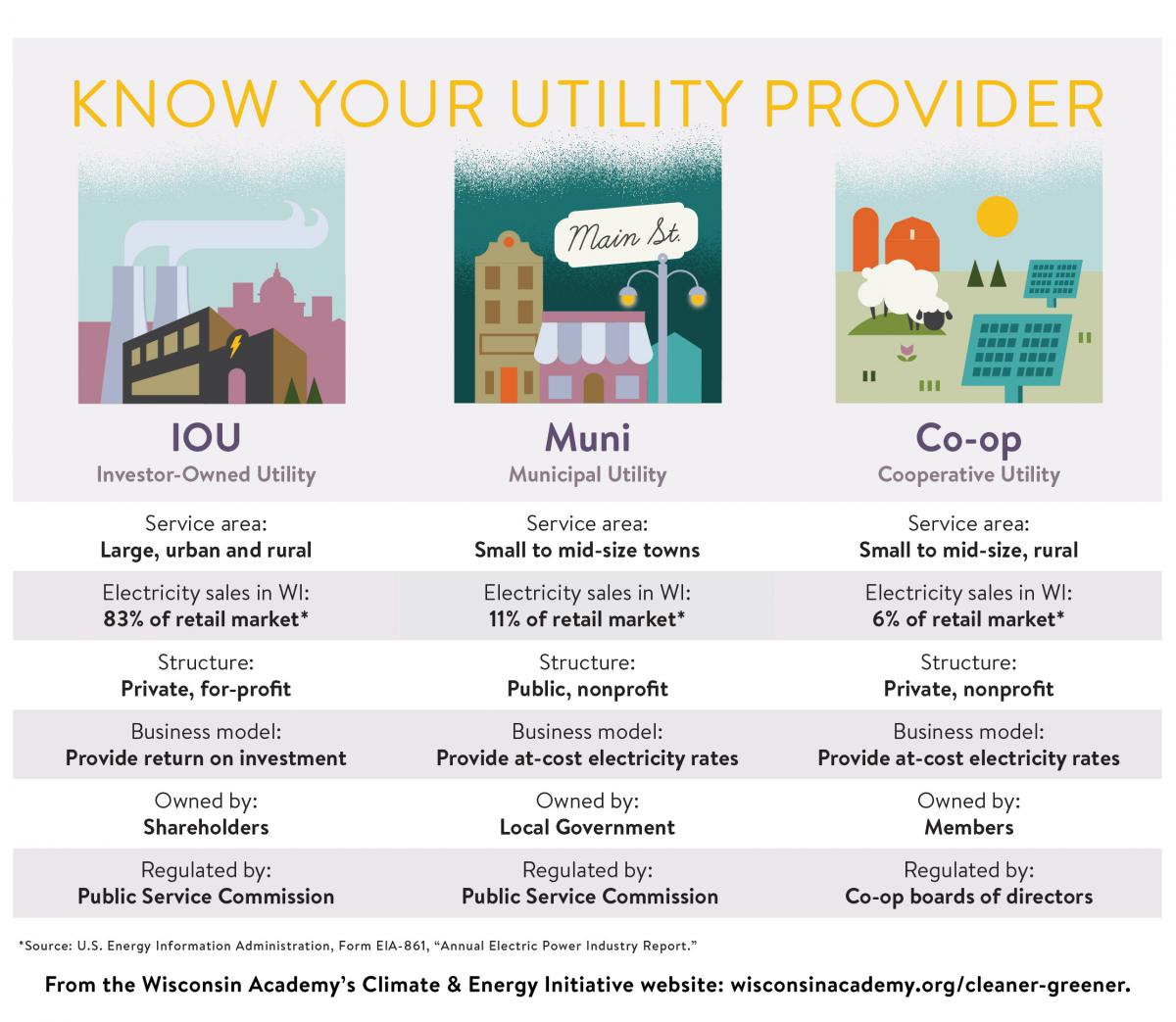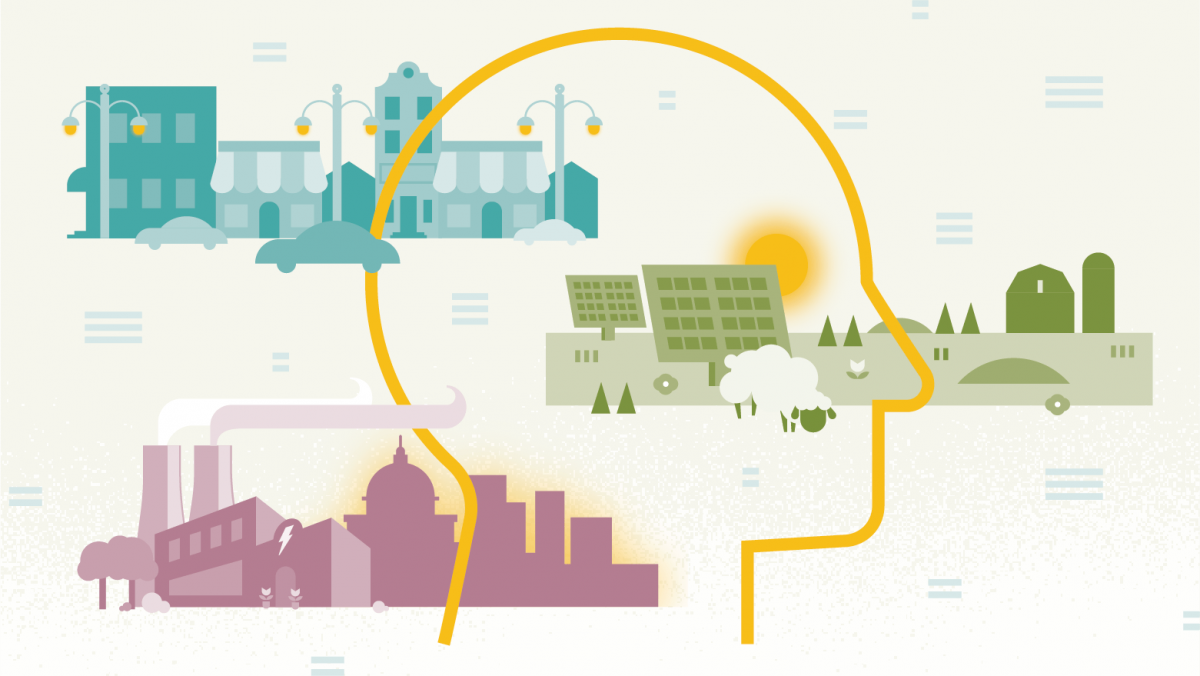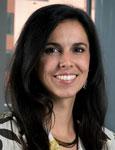From powering our homes, offices, and even cars, to fueling the industries that make just about every component found in each, electricity is central to our modern lives. Yet, for all the positives that come with ubiquitous, relatively inexpensive electricity, the ways in which we generate and use it can have negative effects on our personal health—and the health of our planet. While the scientific consensus is clear that the burning of fossil fuels is accelerating global climate change, both our state and nation have yet to fully embrace economically viable, socially equitable methods of generating clean electricity.
It’s easy to get lost in—and feel like we have little control over—the complexities of our massive, interconnected energy system. Often, decisions about how we conserve energy (such as using LED bulbs or turning off lights in empty rooms) happen on the individual level, and at the end-use phase of the electrical cycle, which can make us feel like our options are limited. Also, decisions surrounding electricity generation and use are made even more complex by myriad logistic and economic factors that at times can prevent us from seeing where we fit into the conversation. Because of these reasons, it’s easy to feel overwhelmed when we look beyond our own light switch to try to understand our role in the way electricity decisions are made.
Here in Wisconsin we generate most of our electricity by burning fossil fuels, such as coal, that contribute to climate change. Yet we can’t simply switch to a utility that provides only carbon-neutral electricity. This is in part because electricity generation and transmission require costly, long-term investments. This structure all but eliminates economic incentives to set up redundant utility services in a particular area. Long ago, Wisconsin decided to allow utility companies to monopolize electricity generation and transmission in return for the right to regulate the way these utilities operate. Thus, today the utility that provides your electricity is based on your address.
Just because consumers can’t choose which utility provides their electricity, it doesn’t mean we don’t have a voice in how our utility operates. “Generally speaking, utilities are responsive to their customers. If customers are interested in certain programs or services, whether it be purchasing solar energy, or using Nest smart thermostats to regulate home energy consumption, utilities will be more motivated to offer and enhance those services,” observes Richard Heinemann, an attorney at Boardman & Clark LLP who focuses on energy law.
A good way to learn more about a utility’s green programs and services is by exploring its website, many of which feature a variety of resources that can help customers better understand their electricity bill. Search for green energy purchase options, opportunities to participate in community solar programs, and other renewable energy and energy efficiency programs that can save customers money and support cleaner, greener energy practices. Also, participation in these programs lets utilities know that they are valued by customers. If your utility does not have a particular renewable energy option or efficiency program you’re interested in, ask for it.
Robin Lisowski says that increasing customer satisfaction and maintaining a healthy bottom line are powerful incentives for utilities to deepen their investment in renewables. As Director of New Business at the Wisconsin Energy Conservation Corporation (WECC), a nonprofit that works with utilities, local governments, and others to design and implement energy efficiency and renewable energy programs, Lisowski sees a “cross section of consumer support for clean energy” that bridges rural and urban as well as political divides. According to Lisowski, the message that “renewable energy can now achieve or beat cost parity with other fuel sources” is reaching Wisconsin’s major utilities, which are making historic investments in solar and wind installations and pairing them with ambitious greenhouse gas reduction goals.
Increasing utility-level investment in renewable energy can also help address Wisconsin’s high retail electricity rates for consumers, which are among the priciest in the Midwest. High rates raise concerns over affordability, particularly for low- and fixed-income communities, for whom lack of electricity access can mean life or death during a heat wave or polar vortex, or when powering critical healthcare equipment. Some argue that access to affordable electricity—like access to water and food—should be considered a human right.
Understanding issues such as these can help consumers weigh tradeoffs concerning electricity-related matters on which they want to speak out. For instance, many people who support wind-generated electricity don’t want the transmission lines required to move electricity from distant wind farms running through their communities, citing potential degradation of natural resources, landscape aesthetics, or rural property values. In another example, those living quite some distance from generation and distribution infrastructure might feel compelled to stand with communities located near coal-fired electrical plants that suffer from elevated risks of asthma and cancer. Such plants are more likely to be located in communities of color and low-income neighborhoods. Indeed, in the United States, race is the strongest indicator of living in close proximity to polluting facilities.
In both cases, communities adjacent to electricity infrastructure, as well as allies seeking to stand with those communities, may wish to speak out on the negative impacts they’re experiencing. Here as with other complex systems, such as food or transportation, understanding how the system works can help in weighing the pros and cons of proposed projects, and determining whether other alternatives are not only viable but beneficial for both-end use consumers and nearby residents affected by the project.
Tom Content, executive director of Wisconsin’s Citizens Utility Board (CUB), underscores the importance of understanding the tradeoffs inherent in making long-lasting energy decisions, such as “whether to invest in a new wind farm, close a coal plant, or build a new transmission line.” From his fourteen years covering energy issues for the Milwaukee Journal Sentinel to his work with CUB, Content knows that, “for better or worse, the world of electricity is full of nuance and complexities, probably more so than most products and services people buy.” He says that by educating ourselves, “consumers can make decisions that will shape the market and the future of the industry the way we want.”
In addition to gaining a basic understanding of utility-level renewable programs and a broader awareness of the socio-cultural context in which electrical utility decisions are made, people may wish to acquire more insight into the regulatory process in order to advocate for changes to our electrical system.
Electric utilities are called public utilities because they’re providing a public service: a safe, reliable supply of electricity. Two broad, fundamental principles explain how the public utility system works, and why regulatory oversight is necessary. First, because a utility provides essential services for the well-being of society—both individuals and businesses—it requires protection from market forces that could disturb or diminish those services. Second, the technological and economic features of the industry make it such that a single provider is often able to serve the overall demand at a lower total cost than any combination of smaller entities.
Thus, what we end up with is, in essence, a “regulated monopoly,” says Content. “Instead of a market, utilities are regulated by the state, and that regulation is meant to serve as a proxy for a competitive market.” Content says that even though the state regulatory process “can make it seem like there’s no role for the public,” people “can and should play an important part in deciding how utilities operate.”
There are three types of electric utilities in Wisconsin: investor-owned utilities (IOU), municipal (muni), and cooperative (co-op). Because each type of utility has a different kind of business model, it’s important to get to know how they work before you insert yourself into the conversation.

While co-ops are regulated by an elected board of directors, investor-owned and municipal utilities—which serve the majority of Wisconsinites—are regulated by the Public Service Commission (PSC). The PSC makes decisions it believes are in the public interest, such as increases in electricity rates and proposed construction of new site generation resources and transmission lines. The PSC also sets funding levels for the state’s Focus on Energy program, which helps residents, businesses, and local governments implement energy efficiency and renewable energy measures.
People who want to have more of a say in the way their utilities are regulated can “file comments in rate cases, construction cases, or other issues before the PSC,” says Content. He notes that it is important to pay attention to the inserts in your utility bills, which often notify customers about upcoming rate changes or other big-impact decisions, as well as mentions of utility issues in the media. These are “your cue[s] to be on the lookout for an opportunity to file comments.” There are over 2.6 million residential electric customers in Wisconsin; yet, in 2017, fewer than 750 public comments were filed with the PSC across all dockets and cases. Public comments enter the formal record which commissioners are required to review and consider in making determinations. Content observes, “The commission can only make decisions that reflect the wishes of the public if it hears from the public.”
Often, people will join forces with the Citizens Utility Board to make sure their voices are amplified when it comes to issues before the PSC. CUB works on behalf of customers to intervene in these cases, providing technical information, expert witnesses and attorneys, and other resources that would be difficult for typical Wisconsin residents to provide on their own. “The evidence and testimony provided on the technical side of the regulatory process carries a great deal of weight, and makes up a great deal of evidence the PSC relies on when making its decisions.” explains Content. “So whether it’s CUB, or another ratepayer organization, support the groups that will make sure you have a voice at the table when all the wonky stuff is going on.”
For some people, the most effective way to influence the electricity system may be to step into a leadership role. By gaining a seat at the table, leaders can make decisions on behalf of utility customers that can directly affect electricity projects, rates, energy sources, and other elements that can lead to systemic change.
A number of mayors and other local leaders throughout Wisconsin (and the United States) have pledged to fight climate change by doing their share to uphold the emissions goals articulated in the 2016 Paris Agreement. In response to the Trump Administration’s abandonment of those goals, Eau Claire’s City Council directed the city’s Sustainability Advisory Committee and city staff to develop local recommendations in line with the landmark agreement. This process led to Eau Claire adopting ambitious sustainability goals: achieving carbon neutrality and obtaining 100% renewable energy for city operations and the wider community of Eau Claire by 2050. Nine Wisconsin mayors—representing Bayfield, Kenosha, La Crosse, Milwaukee, and other cities and towns—are members of the Climate Mayors coalition, which pledges to uphold the Paris Agreement goals and take other local action on climate change.
Citizens can talk to elected officials and voice their support for climate and energy goals, or suggest more aggressive measures than those currently in place. Many local communities across Wisconsin are setting ambitious goals for greater energy independence and greenhouse gas reductions. In addition to Eau Claire, the cities of Madison and Middleton have also passed resolutions to power their communities with 100% renewable resources by 2050. Over 140 Energy Independent Communities in Wisconsin have adopted a goal to generate 25% of their energy from renewable sources by 2025. County boards of supervisors from over thirty counties have adopted resolutions helping property owners to obtain low-cost, long-term loans for renewable energy and efficiency improvements through Property Assessed Clean Energy (PACE) financing. These efforts often start with a vision for change—from a passionate citizen who regularly voices opinions at committee meetings or a mayor who represents his or her community’s best interests by committing to a carbon-reduction goal.
A number of municipal governments have formed sustainability committees composed of private citizens to advise local elected officials. Boardman & Clark attorney Richard Heinemann, who also serves on the Sustainable Madison Committee, suggests, “getting involved in your local community’s sustainability committee, if one exists, or helping to start one, if one does not. These committees can be a great way to help shape policies around energy that directly impact your community.” One recent community-led example is the creation and approval of a new sustainability commission by Green Bay’s City Council in September 2018. The various community stakeholders comprising the commission will begin by considering pathways the city can take toward realizing a renewable energy-driven future and looking at other possibilities to make a more livable and sustainable Green Bay.
Not surprisingly, communities that create citizen-led sustainability committees and provide resources such as dedicated staff and funding toward achieving sustainability goals make the most progress on efficient and renewable energy. Getting involved as a citizen could mean contacting alders or other local officials to register support for prioritizing sustainability efforts, volunteering to serve on a committee, or showing up at meetings to register public comments. Leadership also comes in the form of volunteering or working for an organization that advocates for clean electricity.
Leadership sometimes means selecting the right kind of leader. According to Content, “people need to vote” if they want to create systemic change on multiple levels. The PSC, a powerful player in the way decisions are made by and for Wisconsin’s electric utilities, is an independent agency headed by three commissioners. However, Content explains, “Commissioners are political appointees. This means that state elections have a tendency to shape the policies at the PSC, much in the same way that presidential elections shape the Supreme Court.”
Federal, state, and local governments decide on many other issues that affect Wisconsin’s electricity system. From ratifying international agreements to reduce greenhouse gas emissions to setting renewable portfolio standards to investing in local energy efficiency programs, elected officials make many decisions on behalf of the public concerning the energy that we use every day.
“Obviously, elections and politics shape more than just the utility industry,” says Content. “But, when election season rolls around, make sure to give [some] thought as to how your utility bills might be affected. Ask your assemblyperson, state senator, or the governor what their position is on utility issues that matter to you.” With the mid-term elections approaching this November, there is an opportunity for citizens to shape decisions related to Wisconsin’s electricity system and other public services.
The ways in which electricity arrives in our homes and businesses, ready to power our lives at the flip of a switch, are directly connected to the current and future health of our communities and environment. We all deserve to have a say about what’s best for the health of our families and planet. That’s why it’s important to be an informed and active participant in our energy democracy.
The good news is that you don’t have to be an expert on all of the electricity system’s complexities in order to effect change. There are many places where a concerned citizen can influence this system. You don’t have to switch your incandescent light bulbs to LEDs and then feel helpless as to what else you can do. It’s possible to make meaningful change at multiple levels. And just because you can’t go big doesn’t mean you can’t do anything. Whether you educate yourself to make informed decisions, advocate for cleaner electricity, work your way into a leadership role, or simply vote—there’s an important role for you.




